Watts Up: EV News of the Week For November 4, 2022
The big news this week, for just about everyone who exists in and around the automotive industry, was SEMA. The world’s largest automotive trade show has, once again, descended on Las Vegas and brought with it thousands of vendors and exhibitors, each vying to outdo the others with increasingly wild displays of automotive excess.
Opinion: Cadillac is Making a Mistake With the Ultra Luxurious 2024 CELESTIQ, a $300,000-plus Liftback
As we just reported, Cadillac has just released some more information about their upcoming flagship, the elegantly named and always capitalized CELESTIQ. Set to arrive for the 2024 model year, Cadillac promises its new halo five-door will be unlike any EV ever built previously, and single-handedly restore Cadillac to its former “Standard of the World” status. I really don’t think so.
This Is The Chevy Volt's Post-Crash Safety Protocol
TTAC has received the following protocol, developed by GM in the wake of the June Volt fire at a NHTSA facility in Wisconsin, from a GM source and has confirmed its legitimacy with a second GM source. Though the procedure may be refined based on the findings of NHTSA’s latest round of tests, it gives a good picture of what GM currently does to ensure the safety of Volt driver and passengers as well as rescue workers, towing company workers and salvage yards. And, I have to say, it puts some of my fears about this safety scare to rest. It hadn’t occurred to me that GM’s Onstar system could provide opportunities to respond to crashes in real-time, and apparently the system provides a wide variety of data with which GM’s “corporate SWAT team” can tailor its response to any Volt crash event. Hit the jump for the full procedure.
EPA Considering Tougher Emission Rules for Big Trucks
The U.S. Environmental Protection Agency (EPA) will reportedly consider adopting new emissions rules for large trucks after Congress passed fresh incentives designed to accelerate the national adoption of zero-emission vehicles.
Report: Nobody Can Build Enough Electric Vehicles
Automakers have been having trouble building much of anything since 2020 began, thanks to a comprehensive breakdown in logistics. But the hype around electric vehicles has made them even trickier to build now that they’re starting to represent a more meaningful portion of the market. Ironically, the industry’s desire to see EVs become more popular seems to be backfiring as nobody seems capable of keeping up with demand.
EV Sales Are Up, But So Are Lithium Prices
With electric vehicle sales on the rise and the Biden administration allocating $900 million to address the insufficient charging infrastructure – one of the biggest obstacles EVs have to contend with – it seems like alternative energy automobiles may indeed become the future of driving. However, there is one problem even a firehose of money and mounting regulatory pressure can’t address.
Despite massive investments from both government and private entities, EVs need batteries, and the raw materials required aren’t getting any easier to obtain. Lithium values continue to rise and have recently reached an all-time high that’s setting the stage for pricier electric vehicles. While this wouldn’t be so bad by itself, EV prices jumped dramatically this year and have continued to do so at a pace that has overshadowed their combustion-reliant counterparts.
Faraday Future FF 91 Fancily Flails for Journalists at Monterey
Faraday Future was keen to show off its EV crossover during high-profile events at Pebble Beach a couple weeks ago. Nearly ready for production, Faraday says customers who have ordered the FF 91 could receive their vehicles by end of year. Given the CUV is so far along in its development, journalists were allowed to ride along in the super luxurious (and expensive) FF 91. Unfortunately, it didn’t go well.
Couple Learns the Hard Way How the Future of Motoring is Paved With Discontinued Batteries
A couple’s recent experience in Florida highlighted an issue that’s bound to become more prevalent as the motoring world leans into its EV future. After experiencing some issues they took their Chevrolet Volt to a dealer in Cape Coral, Florida. It turned out the Volt had a battery issue, and it could be fixed for $29,842. Welcome to the future.
Gas War: Pro-EV California Declares State of Emergency, Ask Residents to Use Less Electricity
Just days after the California Air Resources Board (CARB) finalized its plan to ban internal combustion engines by 2035, Governor Gavin Newsom issued a state of emergency due to an overtaxed energy grid. Citizens are now being asked to ration their power usage while the government tries to figure out new protocols for dealing with the matter. This includes asking the owners of all-electric vehicles to hold off on charging them. However, people are starting to wonder what this ultimately means with respect to the proposed future where the state has effectively mandated all residents to drive EVs.
Gas War: California Finalizes Combustion Ban Plan
The California Air Resources Board (CARB) is supposed to vote on stricter rules that will ban the sale of new gasoline-powered cars by 2035 later today. But we already know what the results will be because the organization is about as mentally homogeneous as a eusocial insect colony and is strongly supported by the state government. So let’s cut to the chase and hear what California has to look forward to before seeing what kind of combustion bans are taking place in other parts of the world.
Surveys Suggest EV Owners Still Annoyed With Charging Infrastructure
There’s been an increase in reports of inoperable charging stations intended for EVs this year, with the data coinciding with J.D. Power’s annual Electric Vehicle Experience Public Charging Study. Despite EV sales continuing to climb, the survey showed that people are actually becoming less satisfied with charging stations overall.
"Not only is the availability of public charging still an obstacle, but EV owners continue to be faced with charging station equipment that is inoperable," elaborated Brent Gruber, executive director of global automotive at J.D. Power.
Dodge Charger Daytona SRT Concept: This EV Has an Exhaust System
Who else but Dodge could be trusted to design and patent an honest-to-Mopar exhaust system for an electric car? Hell-bent on the concept that their customers are intent on continuing their raucous ways long after the last internal combustion engine has gone silent, Dodge figures their target market wants to announce their presence instead of gliding silently into the room.
As someone smack in the middle of this demographic and holding the keys to a V8-powered Challenger, I feel compelled to say they may have a point.
Auto Lobby Warns EV Tax Credits Are Shrinking
With the automotive lobby having signaled its displeasure with some of the concessions made in the “Inflation Reduction Act” signed by President Joe Biden on Tuesday, the White House has said some 20 models will still qualify for electric vehicle tax credits of up to $7,500 through the end of 2022. However, that’s down roughly 70 percent from the number of models that could have ridden out the previous scheme, as the new content requirements have made most fully electric cars ineligible.
QOTD: Ready for An EV Performance Revolution?
Recently, Dodge made news by saying its beloved V8 performance cars are going full EV in the not-too-distant future. BMW is talking about a similar transition.
QOTD: Why Aren’t EVs Becoming More Affordable?
Ford increased pricing on the F-150 Lightning EV substantially this week, citing “significant material cost increases and other factors.” The all-electric model now comes with an MSRP that ranges between $46,974 (for the base Pro trim) and $96,874 (for the Extended Range Platinum). All told, the decision has made the pickup anywhere from $6,000 to $8,500 more expensive than it was just a few days earlier. In exchange, Blue Oval has ever so slightly upgraded the maximum range of some of the lower trims. But some of us would probably prefer a more comprehensive explanation as to what’s causing EV prices to surge in general, because it’s not just Ford that’s been raising the sticker price of in-demand electric vehicles.
Meyers Manx Reborn as All-Electric Dune Buggy
The iconic Meyers Manx is one of those vehicles everyone recognizes, even if they don't quite know what it is. Developed in 1964 by Californian engineer, artist, boat builder, World War II veteran, and surfing enthusiast Bruce Meyers, the Manx became a popular way for people to convert ho-hum Volkswagen Beetles into truly capable dune buggies. It became an overnight success among those looking to dabble in off-road racing on the West Coast and was gradually embraced as a viable street rod. But it's probably best known for being America's de-facto fiberglass beach vehicle, ready for whatever kind of Surfin' Safari its owner had in mind.
Porsche's Next Flagship Will Be an EV Crossover
Despite hardcore motorsport enthusiasts collectively proclaiming the 911 as Porsche’s greatest model of all time, it’s presently being outsold by the all-electric Taycan sedan. As a subsidiary of Volkswagen Group, Porsche was already poised to electrify its entire lineup in anticipation of government restrictions on gasoline-powered models. But consumer interest in high-end EVs may be accelerating the process.
N Day: Hyundai Reveals N Vision 74 And RN22e, Ioniq 5 N Debuts In 2023
The 21st century has been particularly kind to the Hyundai Motor Company, though this was hardly a matter of chance. Originally known in the West for providing bargain automobiles that were surprisingly competent, it wasn’t long before the South Korean brand was giving Japanese mainstays stiff competition. By the early 2000s, Hyundai was working hard to differentiate itself from the recently acquired Kia and opted to make its products more luxurious and saw massive gains in the U.S. market that have more-or-less continued until today.
GM Announces Nationwide EV Charging Network
General Motors has announced a national network of quick charging stations for electric vehicles to be installed at Pilot and Flying J truck stops. Managed by EVgo (a subsidiary of the South Korean LS Group), the network may be the final piece of the puzzle for GM to make good on its promise to go all-electric. It’s already spent oodles on development, created partnerships with global battery suppliers, and now has a glut of EVs on the way –a glut of product that GM is hoping will resonate with consumers.
Nissan Leaf Rumored for Discontinuation [UPDATED]
In 2010, Nissan launched the first globally-marketed electric vehicle in history. Known as the Leaf, the model offered a paltry 73 miles between charges when it was introduced. But deserves loads of credit for being a useful, friendly runabout that avoided many of the strange design choices other manufacturers leveraged to set their EVs apart. Reviewers frequently praised the Nissan Leaf as a great second car for running errands, noting that it was both comfortable and had enough space to swallow up most items you’d want to snag on a trip into town.
2024 Hyundai Ioniq 6 EV Previewed
In 2020, Hyundai Motor Group unveiled the Prophecy concept EV which everyone immediately noticed had embraced an alternative, almost opposite, design language from the angular 45 concept. The latter model went on to serve as the blueprint for the Ioniq 5, whereas the Prophecy has morphed into the Ioniq 6 you see before you.
EVs Are Becoming More Expensive, Not Less
A few years ago, the industry narrative was that all-electric vehicles would reach financial parity with their combustion-driven counterparts in 2025. The assumption was that this would gradually occur by way of ramping up battery production and leveraging economies of scale. However, reality had a different take, as the world is now confronting record-setting prices across the board. Manufacturer and dealer hikes have resulted in the average invoice of EVs rising to $54,000 — roughly 10 grand higher than the typical transaction price of gasoline-powered vehicles, according to J.D. Power.
With economic pressures spiking the value of all automobiles, hardly anything is leaving the lot for less than it could have been had for in 2020. But the increases seen on all-electric models are actually outpacing the models we’ve been told they’re supposed to replace.
Buyout Begone: Ford Says You Can Never Own Leased EVs
Ford Motor Co. will be suspending end-of-lease buyout options for customers driving all-electric vehicles, provided they took possession of the model after June 15, 2022. Those who nabbed their Mach-E beforehand will still have the option of purchasing the automobile once their lease ends. However, there are some states that won’t be abiding by the updated rules until the end of the year, not that it matters when customers are almost guaranteed to have to wait at least that long on a reserved vehicle.
Toyota and Subaru Recalling EVs Over Loose Wheels
Toyota and Subaru are recalling their new all-electric models, though EV fans will be pleased to know that the issue has nothing to do with the battery packs. Instead, the affected vehicles run the risk of losing their wheels under sudden braking or sharp turns — which I suppose isn’t much of an improvement over the possibility of an electrical fire.
The good news is that the problem is limited almost entirely to demo models of the Toyota bZ4X and Subaru Solterra the companies wanted to use for promotional purposes. While they may eventually have found their way into residential garages, the original intent was to have them attend trade events and serve as test models on dealership lots. That’s likely to remain the plan, too. But only after the automakers comply with the demands of Japanese regulators.
Toyota Scales Back June Production, Ford Drops German Factory
Despite starting 2022 announcing a plan to normalize output, Toyota has had trouble living up to its promise. While most automakers were figuring out how to make more money off diminished production, the Japanese brand was plotting assembly schedules that would restore assembly rates to levels that would have been considered normal prior to 2020. But the rest of the market hasn’t managed to match Toyota’s optimism and the automaker has had to scale back its global production plan yet again — citing the usual supply chain constraints stemming from COVID restrictions and worldwide deficit of semiconductors.
Meanwhile, Ford Motor Co. looks to be abandoning its vehicle assembly plant in Saarlouis, Germany. The facility produces the Focus for Europe and may be in danger of closing if the automaker elects to sell it. While the site was in the running to produce Ford’s next-gen electric vehicles, those products have since been slated for assembly in Valencia, Spain.
Ferrari Says Majority of Sales Will Be EVs, Hybrids by 2030
Last week, news broke that Ferrari was plotting a third assembly line in Maranello dedicated entirely to EV production. But this turned out to be little more than a preamble for the obligatory announcement that the company would eventually transition toward building electric vehicles.
On Thursday, the Italian automaker told investors that all-electric and hybrid models will make up 80 percent of its global sales volume by 2030. This is to be done via a slew of new products it hopes to launch between now and 2026. Though the first Ferrari to run exclusively on battery power isn’t scheduled to arrive until 2025. According to the manufacturer, it’s plotting to launch 15 new vehicles as part of the overarching strategy. While some of those will undoubtedly be duplicates boasting open-air cockpits and slightly different powertrains, it has still got to be some kind of record for the brand.
Cadillac EVs May Be Bound for Europe
In 2017, General Motors bowed out of the European market. The tactical retreat came after nearly two decades of struggling to make the region profitable and freed up cash the company could use to expand more profitable endeavors located elsewhere. This basically entailed widening its footprint in China, eliminating modestly sized passenger vehicles from its North American lineup, and setting aside any extra money for electric vehicle development. However, the automaker’s Western clientele has been slower to embrace EVs than hoped, even with gas prices becoming astonishingly high, and market analysts expect the United States to be the very last developed nation to see alternative powertrains go mainstream.
One possible solution for this conundrum is to sell those all-electric vehicles elsewhere — namely Europe.
Gas War: Automakers Continue Begging Government for EV Incentives
On Monday, General Motors, Ford, Stellantis, and Toyota Motor North America reportedly asked the United States Congress to lift the existing cap on the $7,500 federal tax credit for electric vehicles. Though automakers petitioning the government for free money is hardly new business.
Biden Admin Proposes Minimum Standards for EV Charging
With the Biden administration hoping to transition the United States toward all-electric vehicles, it has set a goal of commissioning the construction of a nationwide network of 500,000 EV charging stations by 2030. But saying you’re going to do something as part of a $1-trillion infrastructure plan is a lot easier than actually doing it because there are a lot of steps that have to be taken before a plan can effectively be put into action. This is called planning and it’s something the government occasionally engages in to ensure a program is successful. As such, the Biden administration is issuing a series of standards and requirements for federally funded electric vehicle charging stations.
“To support the transition to electric vehicles, we must build a national charging network that makes finding a charge as easy as filling up at a gas station,” said U.S. Transportation Secretary Pete Buttigieg. “These new ground rules will help create a network of EV chargers across the country that are convenient, affordable, reliable and accessible for all Americans.”
Study Claims EV Charging Reliability Is a Problem
Researchers with the University of California, Berkeley, are pouring cold water of the premise that electric vehicle charging stations will require less maintenance than traditional fueling solutions. The study, which examined 657 individual connectors between 181 public fast-charging stations in the San Francisco Bay area found that about 23 percent were nonfunctional.
That seems quite a bit higher than the number of fuel pumps that might be down at any given station, though the pertinent question is why those EV charging points were inoperable.
Ford Decides Paying for Ads Is Stupid
Ford CEO Jim Farley has said he sees little reason for the automaker to bother using traditional advertising campaigns for electric vehicles. Considering how often I see the Ford logo grace whatever screen I happen to be peering into, this would seem to go against everything I’ve been conditioned to accept. However the company believes its EVs practically sell themselves already, with the executive noting that the Mach-E has been sold out for quite some time.
“I’m not convinced we need public advertising for [electric vehicles] if we do our job,” Farley said during Wednesday’s Bernstein Strategic Decisions Conference.
Buick Going EV Only After 2030, Gets New Logo
On Wednesday, Buick formally committed itself toward an “all-electric portfolio” by 2030 — saying that it would be embarking on a brand transformation that would fundamentally change the company forever. This includes an entirely new horizontally oriented badge that doesn’t stray too far from Buick’s traditional tri-shield design.
“The Buick brand is committed to an all-electric future by the end of this decade,” stated Duncan Aldred, global vice president, Buick and GMC. “Buick’s new logo, use of the Electra naming series and a new design look for our future products will transform the brand.”
Survey Suggests Americans Still Doubt EVs [UPDATED]
While plug-in vehicles are catching on in Europe, representing 21 percent of all new registrations in the first quarter of 2022, they’ve been less popular in the United States. Only about 5.2 percent of American registrations were of the plug-in variety (representing hybrid and purely electric vehicles) during the same timeframe. Despite the industry spending billions to develop and market these vehicles, with some progress being made, the overall take rate within North America remains underwhelming.
Ardent fans of battery based powertrains will undoubtedly disagree. But a couple of studies came out this month that drove the point home. Autolist’s Annual Electric Survey dropped earlier this month, effectively outlining why EVs haven’t been able to make more headway in the states.
Lancia Returns With 10-Year Restoration Plan
Stellantis has been discussing the prospect of reviving the Lancia brand for months, hinting that the returning Delta would even be part of the deal. While technically still active, the historic Italian company has devolved into a swath of rebadged Chrysler products and now produces the Ypsilon (based on the Fiat 500) as its singular offering in Europe.
However, some die-hard fans of the nameplate took umbrage with the matter after it was revealed that the Delta would be an all-electric vehicle in October of 2021. As time went on, the manufacturer vowed that the model would be a worthy successor to performance models like the HF Integrale. But continued insisting upon electrification being an essential component of Lancia’s revival and has formally introduced its overarching plan for the marque.
2024 Honda Prologue Design Teased
Honda has begun teasing out the electric Prologue in earnest, with its latest offering being a sketch of what appears to be a lifted Civic. Though what we’re actually seeing is the brand’s newest “adventure-ready” SUV tapping into the same inoffensive design language that now graces the ever-popular sedan.
The styling is neutral, perhaps even a little dull. But it’s unlikely to put anybody in a bad mood and is still rounded off in all the places one would expect from an EV. The Prologue looks as though it could come from Lucid, just with a dash of rugged design from Rivian and underpinned by Honda’s current design language. There’s little to gripe about, though there’s also not much to ogle.
Foxconn Officially Buys Lordstown Assembly
Best known for manufacturing small electronic devices for companies around the world, Foxconn will soon be branching out to assemble automobiles in Ohio. On Wednesday, the Taiwanese Hon Hai Precision Industry Co. (traded as Foxconn) closed on a deal with Lordstown Motors to purchase a 6.2 million-square-foot plant that used to belong to General Motors.
The $230 million deal leaves Foxconn with the facility and 400 Lordstown manufacturing employees it’s supposed to use to assemble the delayed Endurance pickup. Though the long-term plan is to use the plant to become a contract manufacturer akin to Magna Steyr, with an emphasis on all-electric vehicles.
VW Rumored to Revive Scout Nameplate
Volkswagen Group is reportedly considering reviving the Scout name for North America. Following the merger of trucking subsidiary Traton and Navistar in 2020, VW found itself in possession of the farm-focused International Harvester. While the brand technically hasn’t existed since 1985, the German company effectively owns its intellectual property — including the Scout name — and is keen to leverage some of its nostalgia for an alleged sub-brand specializing in sport utility vehicles.
Stellantis CEO Says EV Transition Poses Serious Problems
The automotive sector is currently suffering from ongoing component shortages and supply chain bottlenecks stemming from regional restrictions relating to the pandemic. However, it’s assumed that those problems will gradually abate, only to be supplanted by a global deficit of the raw materials necessary for battery production. Analysts have been warning about the shift toward electric vehicles, spurred on by government regulations, for years. But they’re starting to get some company from within the auto industry.
On Tuesday, Stellantis CEO Carlos Tavares suggested that there was a very real possibility that manufacturers could begin confronting serious issues in terms of battery production by 2025 if the shift toward EVs continues at pace. Though his concerns aren’t limited to there being a new chapter in the already too long saga about parts shortages. Tavares is also worried that Western automakers will become overwhelmingly dependent upon Asian battery suppliers which already dominate the global market.
Report: Hyundai May Choose Georgia for EV Plant
Hyundai Motor Group has been considering where to establish its planned EV manufacturing hub for the United States for roughly a year now and is reportedly zeroing in on the State of Georgia as a final destination. It’s even said to have conducted some preliminary meetings with local leaders about the possibility of breaking ground in an area that could be strategically aligned with its existing facilities – namely Montgomery’s Hyundai Motor Manufacturing Alabama (HMMA) and West Point’s Kia Motors Manufacturing Georgia (KMMG).
Nissan Developing Nismo Performance EVs
Nissan has coyly been suggesting that it might someday furnish electrified performance models ever since it released Nismo-badged examples of the humble Leaf for the Japanese market. This was followed by the 2020 Leaf Nismo RC, which served as an experiment to see what would happen if you added a bunch of electric motors in a bid to make the model genuinely fast on a race track.
With the automaker set to deliver 15 new EVs by 2030, there’s been some speculation about how many will boast sporting aspirations. But it looks as though a few might know that Nissan has confirmed its developing Nismo-branded performance electrics for the global market.
Rivian Receiving $1.5 Billion Incentive Package from Georgia
Rivian Automotive Inc, purveyor of the all-electric R1T and R1S, will receive $1.5 billion in incentives from state and local governments to build a new manufacturing facility in Georgia. Eager to become home to the company’s planned $5 billion assembly plant, the state is offering a comprehensive incentive package that includes tax breaks. The government has a few stipulations, however.
Under the new agreement, Rivian’s factory would be required to produce 7,500 jobs and its existing investment target by 2028 to receive the full $1.5 billion. That includes a sizable battery production site and may explain why the state is offering up the largest corporate incentivization package in its history.
UAW & Green Lobby Sue USPS Over Not Prioritizing EVs
On Thursday, The UAW and a group of environmental groups based in the United States filed numerous lawsuits in an effort to block the U.S. Postal Service (USPS) from moving forward with plants to purchase gasoline-powered next-gen delivery vehicles (NGDVs) from Oshkosh Defense. The suits are being launched on the grounds that the USPS failed to comply with environmental regulations and went back on an earlier promise to field all-electric variants.
They’re supported by the White House — which launched an initiative to convert the entire federal fleet into battery electric vehicles last year — and congressional Democrats that were angered after the Postal Service went against the Biden administration’s request to prioritize EVs. The president and the Environmental Protection Agency (EPA) even went so far as to request that the USPS to hold off on the $11.3 billion contract with Oshkosh so electric options can be reevaluated. However, Postmaster General Louis DeJoy has repeatedly stated that it’s not realistic to field a significant number of electric vehicles and that the mail service would need additional funding from the government to consider such a move.
Ford Lightning Getting Company in Tennessee
The 2022 Ford F-150 Lightning has officially started production at the company’s Rouge Electric Vehicle Center in Michigan and will apparently be getting some company at the Blue Oval City campus in Tennessee. On Tuesday, CEO Jim Farley said that the upcoming plant had been selected to produce a new model during a press event covering the official launch of the all-electric F-Series.
“It’s another truck,” he explained. “This is not our only truck. We said very clearly we want to be the leader in electric pickup trucks.”
Europe Developing 'Battery Passport' for EVs
A group of German automakers, chemical concerns, and battery producers have announced the joint development of a “battery passport” designed to help government regulators trace the history of the cells. The consortium is funded by the German government and is supposed to work in tandem with new battery regulations that are being prepared by the European Union.
According to the German economic ministry, officially the Federal Ministry for Economic Affairs and Climate Action, the overarching plan is for the EU to mandate traceable hardware be installed in all batteries used in the continent by 2026. Those intended for use in electric vehicles are up first, with the passport scheme also serving to chronicle everything from the vehicle’s repair history to where the power cell’s raw materials were sourced.
Mazda Rotary Engine Returning on MX-30
After years of speculation that Mazda would someday bring back rotary-powered performance, the company is finally willing to confirm that our collective hope was not in vain. However, there will be no rear-drive RX model spinning up its triangular Wankel beyond 8,000 rpm because piston-free rotary engines are difficult to seal. Despite making oodles of power for their size, they’re not well optimized for everyday driving and tend to offer the kind of fuel economy and emissions that get regulators’ panties in a twist.
Given the circumstances, Mazda’s rotary will be returning as a range extender for the MX-30 PHEV.
Biden Administration Meets With Auto Execs, Including Elon Musk
The Biden administration held another meeting with automotive executives about how to ensure electric vehicles go mainstream. But this time it included Elon Musk, who runs the most successful EV brand in the entire world.
After taking criticism for shunning the Tesla CEO in earlier meetings, senior officials held an event on Wednesday where he and other industry leaders could contribute as to how the United States should handle a national charging infrastructure and spur adoption rates. Despite Musk having often expressed a dissenting opinion in regard to President Biden’s strategy, the White House said that the meeting was productive and resulted in a “broad consensus that charging stations and vehicles need to be interoperable and provide a seamless user experience, no matter what car you drive or where you charge your EV.”
GM's Oshawa Plant Increasing Truck Production, CAMI Getting Electric Vans
On Monday, General Motors’ added a second shift for Heavy Duty variants of the Chevrolet Silverado at Oshawa Assembly to ensure the automaker can meet demand. There are also plans to launch a third shift to spur production of light-duty pickups after GM spent the last two years struggling to deliver vehicles in a timely manner.
GM Canada recently representatives from the Canadian federal government, eager to show that its $2 billion investment into Ontario manufacturing (specifically at Oshawa and CAMI Assembly) had already borne fruit. While this is said to eventually include the production of BrightDrop’s all-electric and perpetually connected Zevo vans, GM is presently focused on swelling production on some of its most valuable products.
SEC Subpoenas Faraday Future Executives
Several executives from perpetual automotive startup Faraday Future have reportedly been subpoenaed by the U.S. Securities and Exchange Commission as part of an investigation into inaccurate statements made to investors. Though, considering the nameplate’s history, it would be impossible to assume which item the SEC will be focusing on thanks to FF’s exceptionally long history of industrial misgivings.
We’ve covered Faraday Future’s long and bizarre story from the early days of delivering half-baked, though otherwise impressive, concepts to its more recent status as an automaker in the ethereal sense. It’s promised the moon and only managed to deliver a handful of production husks that never surpassed the body-in-white phase and some “production-intent” prototypes of the FF91. Though the larger story is the SEC’s sudden interest in electric vehicle startups that went public via mergers with blank check firms, better known as special purpose acquisition companies (SPACs), over the last two years.
Dealers Annoyed With Price of EV Charger Installs
As the industry continues struggling with its planned swap to electric vehicles, we’ve seen plenty of framing suggesting dealer networks are only too happy to participate. But it’s usually juxtaposed with articles indicating that pushback exists, typically whenever the metaphorical rubber meets the road. This month provided several premium examples stemming from the National Automobile Dealers Association Expo (NADA Show 2022) held at the Las Vegas Convention Center.
Though the best had to be when several dealer groups piped up about how much it’s actually going to cost them to install some of the newer chargers some manufacturers believe should be mandatory if they’re intent on selling EVs. Some showrooms are finding out that not all buildings are wired for the high loads incurred by modern charging systems, requiring additional financial investments they hadn’t counted on. With automotive dealerships using product delays as leverage for unprecedented vehicle pricing, it’s nice to see them getting a taste of their own medicine. Or it would be if the costs for updating facilities weren’t guaranteed to be reflected on future window stickers.
Ford Lighting EPA-Estimated Range Confirmed
With window stickers of Ford’s all-electric Lightning pickup having leaked late last week, there were a lot of people interested in having their “Fuel Economy and Environment” estimates verified. Ford CEO Jim Farley has obliged by confirming the figures, adding that the vehicle’s maximum range should ballpark around 300 miles (or better) unless you snub the extended-range models.
The executive confirmed the F-150 Lightning XLT, Lariat, and Pro trims at 320 miles with the bigger battery. Though those running with the standard battery pack only yield 230 miles between charging. Meanwhile, the Lightning Platinum tops out at 300 miles even due to it having gnarly tires and being less aerodynamic than its siblings.
Opinion: Someone Needs to Teach Joe Manchin How EVs Work
Senator Joe Manchin (D, West Virginia) said something this week that makes me think he needs to sit down with a guide to how electrification in vehicles works.
Ford Outlines EV Production Strategy for Europe
Ford Motor Co. has shared its intent to launch seven fully electric vehicles in Europe, including a battery-electric variant of the Puma subcompact crossover, its best-selling (and looking) passenger car for the market. Though the first EV in its new product offensive will be a midsize crossover helping Blue Oval deliver on a previous promise to manufacture electric vehicles in Cologne, Germany.
The unit is said to capitalize on Ford’s partnership with Volkswagen Group by leaning on the latter entity’s MEB platform that already underpins VW’s ID products and Audi’s e-tron vehicles. Driving range is estimated at 311 miles per charge, with the company anticipating a formal debut later this year.
Opinion: EV Discourse Once Again Lacks Nuance
Electric vehicles have once again become a political football.
As someone who lived through the Chevrolet Volt discourse all those years ago, I’m getting a sense of déjà vu.
Gas War: EPA Reinstates California's Ability to Set Emission Limits, EV Mandates
The U.S. Environmental Protection Agency has opted to reinstate California’s ability to set tailpipe rules and zero-emission vehicle mandates that are more rigid than federal standards. After quarreling for years over the Trump administration’s decision to roll back Obama-era fueling standards deemed untenable, the Golden State now has the ability to once again make harder for its citizens by forcing them to purchase the kind of vehicles it feels they should be driving — rather than leaving it up to the individual that’s actually buying the car.
Though it might not matter at this point. While California effectively served as a defensive shield against proposed fueling rollbacks while Trump was in office, the Biden administration strategy is broadly in line with its agenda of making gasoline unappetizing to consumers to ensure a speedy transition to electric vehicles. California doesn’t even want people to have access to gas-powered lawn care equipment. The state has effectively served as a test case for Build Back Better since before the phrase passed through the lips of a single politician.
Rivian Rolls Back Price Increase After Making Everyone Angry
On Tuesday, Rivian announced it would be increasing vehicle pricing by roughly 20 percent to account for higher inflationary pressures and higher component costs. It’s not the first electric vehicle startup to do so, or even the first automotive business that realized the hectic economic situation has created a window for expanding profit margins. But it was one of the few to get slapped in the face, metaphorically, after trying to get away with it.
Shares of the company began plummeting almost immediately as it endured widespread criticism, then people started canceling reservations. The plan would have made the $67,500 Rivian R1T electric pickup an $80,000 vehicle, while Rivian would have tacked on an additional $10,000 to the R1S SUV for a new ballpark total of $85,000. This included preorders, which would help to explain why everyone went bananas. But that particular aspect of the plan has been abandoned in an effort to save face and money.
GM Dumps Lordstown Motors
Lordstown Motors has gone from the savior of Ohio to just another blowhard electric vehicle startup. Last year, it became the focus of investment research firm Hindenburg Research and an incredibly damning report that accused the company of fraudulent behavior. The paper cited thousands of non-binding, no-deposit orders and was proven right a few months later when the startup announced it didn’t actually have enough money to commence commercial production. By June, Lordstown was under investigation and losing top-ranking executive with nothing to show for itself other than a factory it purchased from General Motors at a discount where it installed a pointless solar panel array. The company said it would be selling the plant to Foxconn Technology Group (Hon Hai Technology Group) in October, along with $50 million in stock, with the plan being to make the Taiwanese firm a contract assembler for the Lordstown Endurance pickup.
It’s going to need that money too because GM is severing ties with the startup and has confirmed it offloaded its remaining stock over the holidays. While the Detroit-based automaker only held about $7.5 million worth of shares, it still represented about 5 percent of Lordstown and continued support of a business that looked to be foundering.
U.S. Postal Service Decides to Snub Electric Vehicles
The United States Postal Service (USPS) has been under pressure from the White House to replace its aging fleet with all-electric vehicles. But it’s looking like mail carriers will continue doing their jobs in oddly shaped trucks that burn gasoline.
While the Biden administration’s green agenda calls for government fleets to begin transitioning to EVs, the USPS had already decided to purchase 165,000 examples of the Oshkosh Defense NGDV that’s dependent upon liquid fuel. Despite the contractor saying trucks could be converted into battery electric vehicles and/or hybrids, the vast majority will be wholly reliant on internal combustion. The USPS has decided that it’s just not cost-effective or practical to do anything else and no amount of pressure from the White House will be changing its mind.
Money on the other hand…
Report: Ram to Introduce 1500 Electric With Range Extender
This week, Stellantis announced the Ram Revolution at the 2022 Chicago Auto Show. Though it was less of an all-electric pickup concept intended to compete on a market that’s about to become saturated with them, and more of a way to engage with consumers on how the truck brand should implement its take on the segment.
To the surprise of everyone working here, Ram’s Revolution turned out to be little more than a market-research campaign designed to ensure the automaker can build an electric truck people actually want to buy. But that doesn’t mean the manufacturer hasn’t already made plans of its own. Ram CEO Mike Koval Jr. has even been sharing some of Stellantis’ electrification strategies, including outfitting some 1500 electric pickups with a range extender.
Ford CEO Asks Dealers to End Markups, Plans Punishment
You’re probably well acquainted with dealer markups by now. Supply shortages created during the pandemic have left the world with fewer automobiles and car dealerships are taking full advantage of the elevated demand. As you might have expected, this trend resulted in plenty of people overpaying or becoming cautious of a market they now see as wildly predatory.
Car manufacturers have begun asking dealerships to take it easy on the price gouging. General Motors made its plea last week and Ford has followed up by reiterating its own concerns during the company’s Q4 2021 earnings report. The Oval is worried that dealer markups are tainting its relationship with customers, with top executives making casual references to the trend back in November. Ford CEO Jim Farley is now telling dealers that they need to cut it out lest they be punished by the manufacturer.
Biden EPA Tells USPS More Mail Trucks Should Be EVs
Last spring, the United States Postal Service announced that it would finally be replacing its fleet of Grumman Long Life Vehicles (LLVs) that have more than lived up to their name. Having entered into service in 1987 to replace the Dispatcher Jeep, the LLV is scheduled to be replaced by 150,000 new mail trucks from Oshkosh Defense. While the government originally wanted to use an all-electric platform, it was believed that rural routes probably required an internal combustion vehicle. Preexisting government contracts with Oshkosh likely made it a compelling manufacturer, though it annoyed some of the smaller candidates. Workhorse even sued the USPS last summer for not selecting its hideous entrant, though the official complaint was that the government hadn’t given EVs a fair shake.
That now appears to be changing because the Biden administration and Environmental Protection Agency (EPA) have asked USPS to hold off on the $11.3 billion contract with Oshkosh so electric options can be reevaluated.








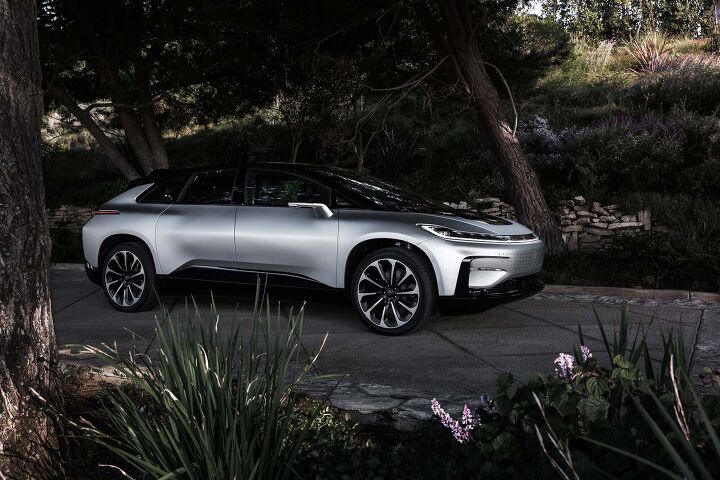






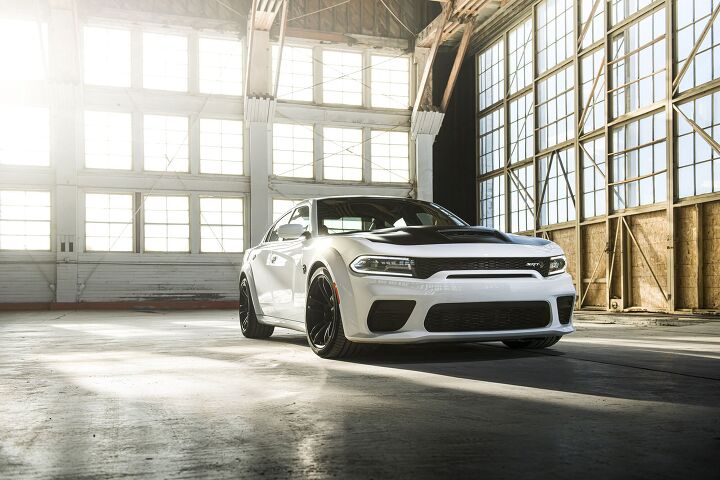
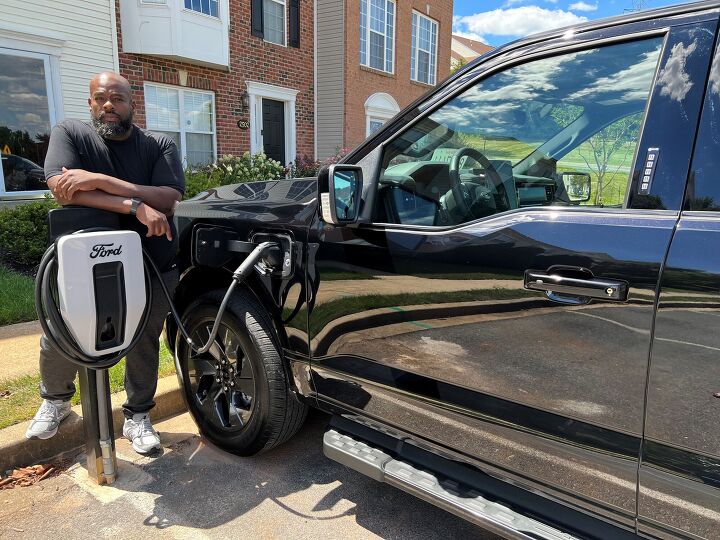


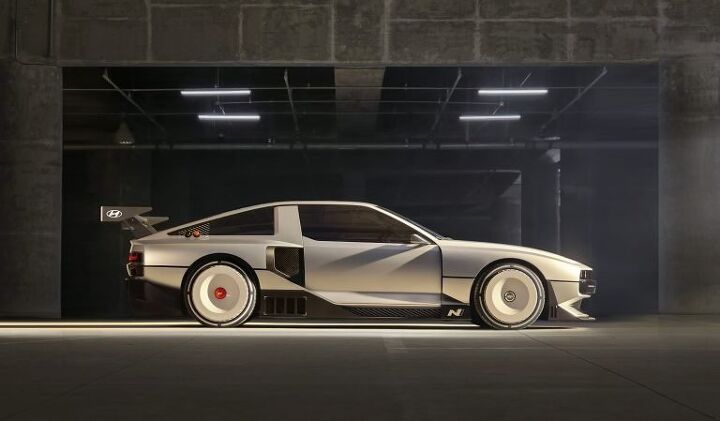

![Nissan Leaf Rumored for Discontinuation [UPDATED]](https://cdn-fastly.thetruthaboutcars.com/media/2022/07/19/9148523/nissan-leaf-rumored-for-discontinuation-updated.jpg?size=720x845&nocrop=1)
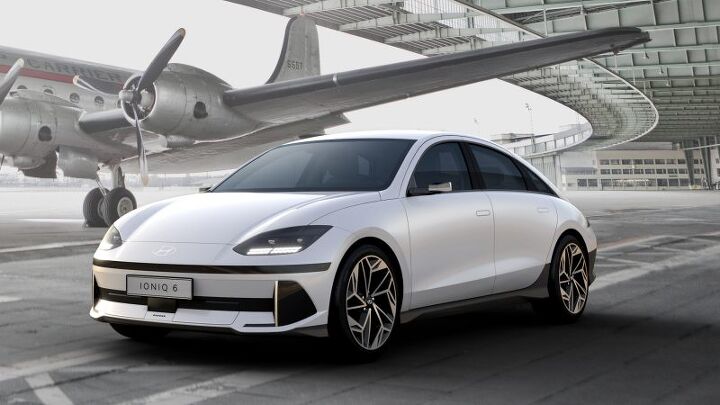


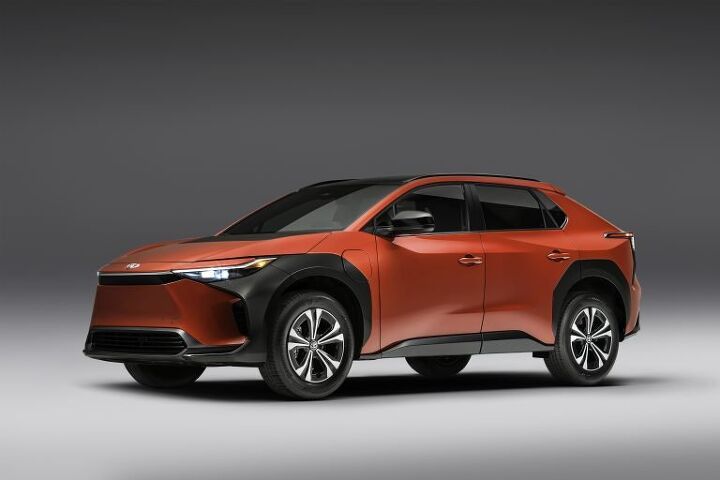
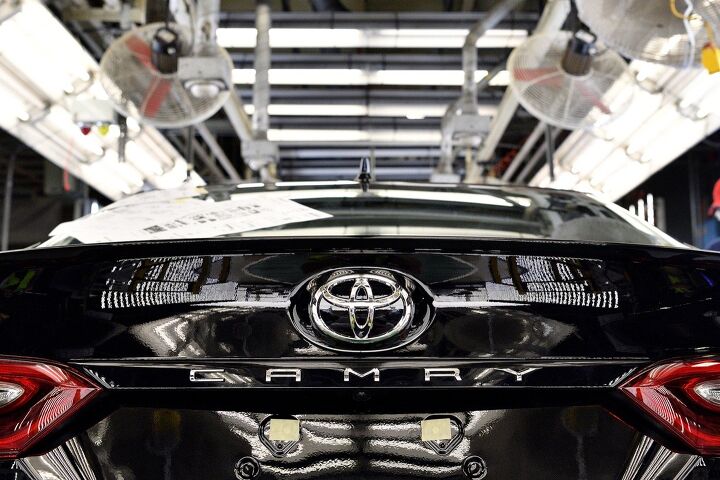







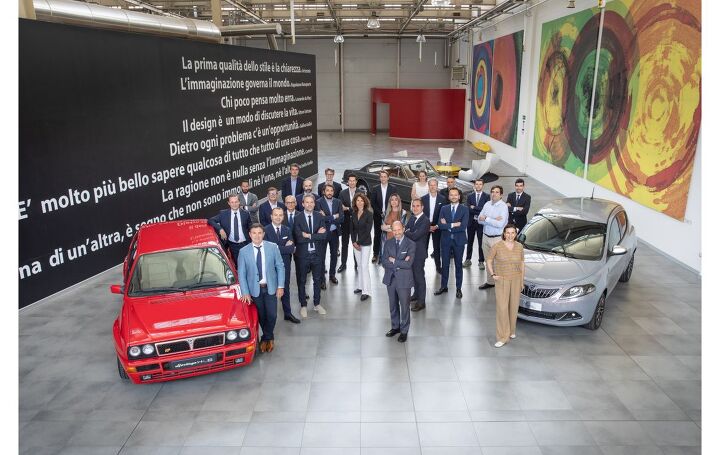
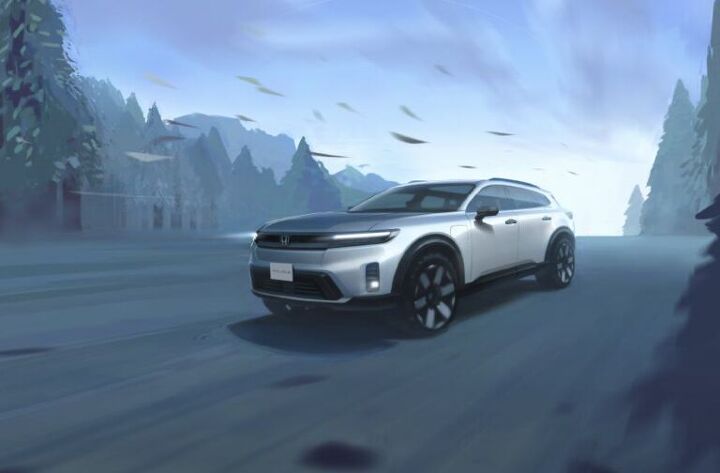





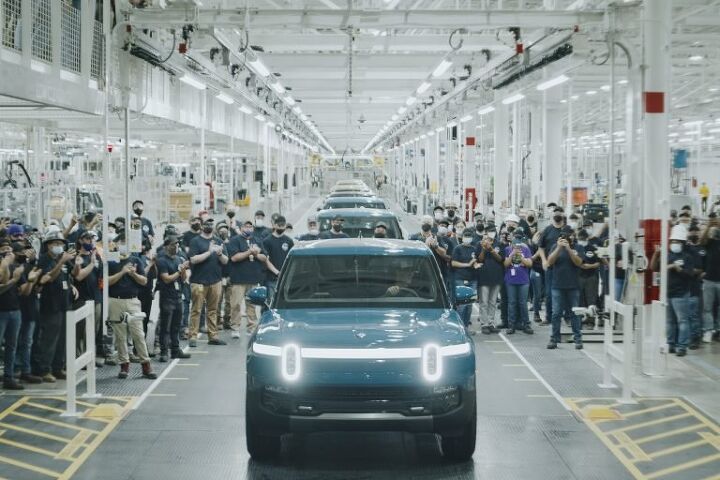




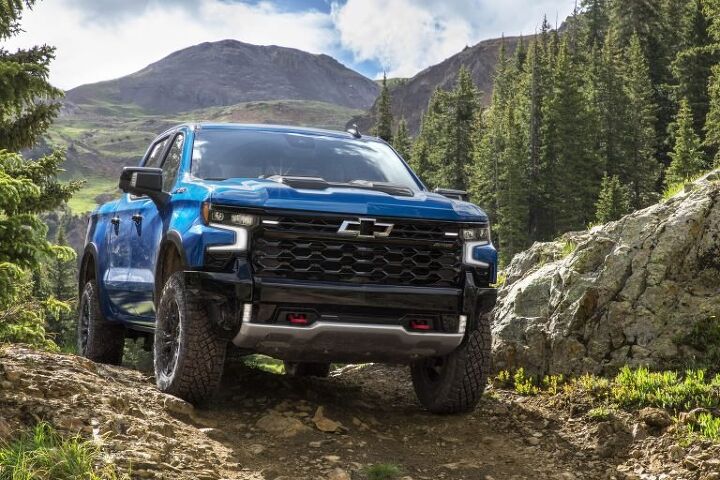








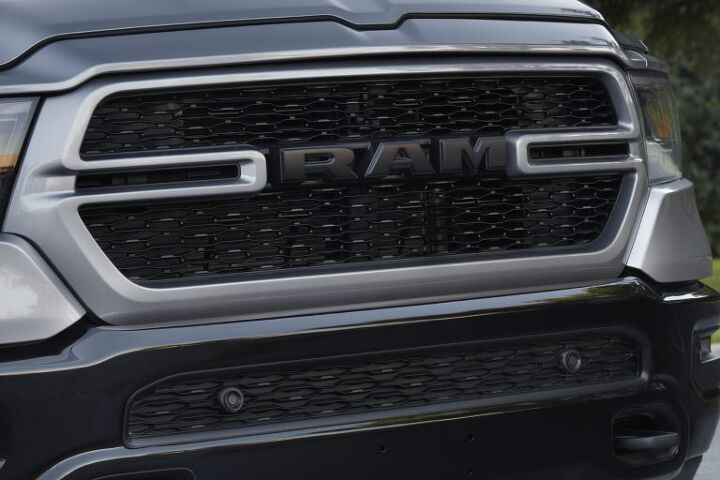













Recent Comments